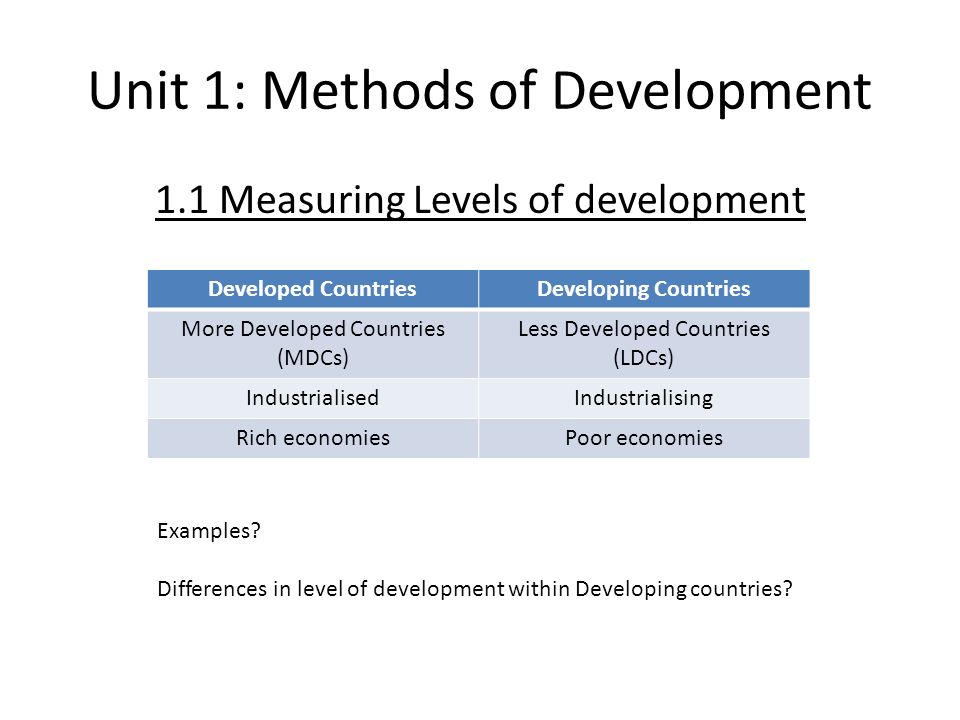Contents:


Adding such fancy math is useful when using more complex models and assumptions, which are often best for situations where sales and lead times vary quite a bit. But the three variables above form the core of almost every ROP calculation. In this theoretical world, you’d be running a business with no need for inventory, placing orders as the customers come to you and having your customers served instantly. First, reorder points allow a business to make fast, low-stress, data-driven decisions about ordering inventory, without having to start from first principles every time.
Let’s continue with the manufacturer example and calculate the reorder point. Over those three months , an average of 1.5 units were sold daily. Knowing the point at which your business should replenish stock is really important. Use our guide to learn about the Reorder point and how to calculate it.
- In this, they also help lower the chance of accidentally overstocking items.
- They’re also the best way to implement reorder points in the inventory management system you use for your business.
- In this article, I will explain in simple terms the main calculation methods in Excel, as well as those I recommend.
- We would use this number, in addition to our historical data, to find our standard deviation.
Stockouts are generally much worse than a small amount of excess inventory, after all. Reorder points do not consider the dependencies between different items or production workflows. ROPs are thus unsuitable as the only method for accurately determining reordering or production schedules for multiple items, parallel production lines, and complex operations. Finally, safety stock is the number of items that companies keep in stock to guard against stockouts that may occur due to sudden shifts in supply and/or demand. If the delivery of an item is delayed or the consumption rate increases rapidly and unpredictably for any reason, the safety stock will cover the shortage of items.
Customizing the supply planning approach per the demand history at a product location rather than applying a blanket approach to all products will produce superior results. The reorder point encompasses in its concept the safety stock level and the delivery times of goods by the supplier, to determine its limit. Reorder points can be calculated and maintained using pen and paper or spreadsheets programs like Excel. However, modern inventory management systems usually have various degrees of ROP functionality built-in that automatically trigger parts of the stock replenishment process. Modern solutions often use ROPs in conjunction with constraints management and other advanced forecasting methods, enabling deeper insights into stock consumption. A reorder point, or ROP indicates an inventory item’s minimum stock level at which new stock should be ordered in order to avoid a stockout.
Reorder Points Versus MRP or Forecast Based Planning
Easyship makes it easy to track inventory and gain visibility of all your shipments. Our all-in-one software automatically updates inventory after each shipment, helping you know exactly when to rebuy more stock. Integrating your inventory and shipping processes is a huge time-saver for businesses. Let’s return to our example of 10 hoodies of a type sold per day.

Let’s say our max daily orders are 20 hoodies, and our max lead time from the hoodies supplier is 7 days. We’ve already set our average daily orders at 10, and our average lead time at 5. To calculate lead time demand, you multiply the lead time for a certain product by the average number of units sold each day. Knowing the right time to order stock helps your business be cost-effective.
What is the reorder point formula?
You can’t place an order on Thursday and have it come on Sunday, so the actual lead time would be longer. Anything you need for the weekend would have to be in by Friday or you can’t sell it on Saturday or Sunday. This means you need to order your weekend supplies by Tuesday, which, in turn, means you need to be looking almost a week ahead and not just three days when deciding when and how much to order. When your inventory is down to 160 pieces, that’s when you need to order more from your supplier. It might seem like a lot for a product that only moves four units a day, but in this case it’s the long lead time that drives the result.

In addition, the cost of sale of each item in your warehouse will most probably vary dramatically, with some items being cheap to sell and others absorbing much more investment. Ordering the same amount of every item at regular intervals does therefore not make financial sense. It could also lead to inventory turnover issues, as investment is tied up in excess stock, while other items end up out of stock, at the risk of upsetting important customers.
Reorder Point Strategies
The reorder point is the stock level at which we need to replenish inventory. We make an order when we reach the Reorder Point, and we receive the item when we reach the safety stock level. The standard deviation helps you express how reliable your suppliers actually are, so you can better calculate your buffer stock.
Each point-of-sale, or POS, system uses reorder points in a different way. For example, some will calculate reorder points for you automatically, while others use the reorder points you enter to help automate the reordering process. How do you maintain the balance of the required supply of inventory? You do it by automatically calculating the reorder point for each SKU.
This system works by requiring managers to order more products when the current supply of products falls below a predetermined amount. We briefly mentioned automation when talking about reorder point calculators. Inventory management software can be a huge positive for your organization in several ways. It might be tempting to set reorder points then move on to the next vital project, but things change. While it might be challenging to reach the scale of these retail giants, they provide excellent lessons in managing current stock, improving forecasting, and meeting demand. If you’re looking to bypass all the calculations above, try our reorder point calculator below.
For example, Apple’s iPhone is far more popular than any other product they produce, so its daily sales velocity is likely higher than their laptops or iPads. The daily sales velocity, or the average number of units you sell per day, differs for everything you sell. The reorder point varies from product to product and is primarily influenced by two critical factors – daily sales velocity and lead time. Avoiding using your average daily sales because the perfectly fine inventory on a Monday may be insufficient on a Friday morning because of the busy weekend. The vital strategy for successfully implementing a reorder is to execute it consistently. You can use a free reorder point calculator or manually use the reorder formula to replenish inventory and meet customer demand with finesse.
For example, they can work well for make-to-stock manufacturers or when demand fluctuations are limited to easily predictable seasonality. Engineer-to-order manufacturers and companies operating in fluctuating markets, however, need to look elsewhere. The reorder point approach does not, in itself, utilize advanced forecasting methods or take into account production constraints other than material availability. They can also be a lot of work to maintain as they require constant re-evaluation when changes occur in supply chains or customer demand. The reorder point formula ensures you have enough stock to cover your demand during your lead time and adds your safety stock to this number. With this reorder point method you place orders when you reach a specific date in a fixed order cycle.
Fresh looks and new beginnings: RTIH’s biggest retail technology … – Retail Technology Innovation Hub
Fresh looks and new beginnings: RTIH’s biggest retail technology ….
Posted: Thu, 13 Apr 2023 05:07:46 GMT [source]
Your shoe supplier takes an average of 7 days to deliver every new batch of shoes. On a typical day, you sell 5 pairs of shoes and 2 shoe protectors. If you sell more than one product category in your eCommerce store, you’ll likely have more than one supplier. Different vendors have different lead times, so you’ll need to calculate reorder points for each product category separately.
This issue is one example, but there are many more questions and ways of optimizing supply planning by addressing questions just like this one for each company. We support clients in the optimization of supply planning systems. If this is something you are interested in, contact us at the chat widget in the lower right hand corner, or at Set the supply planning parameters in a way that one can simulate the impact on the overall supply plan.
It is also essential to period costs overstocking because it will increase your inventory holding costs and diminish overall profits. Returning to our example, let’s say it takes one week for a birthday card order to arrive. However, it takes one day to get approval for the order and another day for the manufacturer to process the order.
However, when used solely to control the supply plan, the company performs reorder point planning instead of forecast-based planning. Let’s consider Example 2 and assume that XYZ Ltd. has set up safety stock for an average usage of 5 days. Because the company has safety stock, it can use both average daily sales and average lead time to determine reorder point. Calculating basic safety stock is quite a straightforward affair that involves multiplying the average demand for items with a preset value of safety days.
You should have a couple of purchase orders on-hand to check the numbers. There are different ways to calculate this, but a three-month average is a good start. The reorder point formula is daily unit sales multiplied by delivery lead time, with some safety stock for good measure.
A perpetual https://1investing.in/ count is ideal for this, but taking an inventory cycle count is also a good choice if you still take physical inventory. Reorder points are a non-forecast or consumption-based planning method. That is, they are triggered by stock dropping below the reorder point.
My Self-Cleaning Litter Box Is So Sleek That I Keep It in the Living Room – Domino
My Self-Cleaning Litter Box Is So Sleek That I Keep It in the Living Room.
Posted: Tue, 11 Apr 2023 18:58:45 GMT [source]
The ROP calculation takes into account an item’s average lead time, its demand rate, and its safety stock level if a company utilizes safety stock. The sales or manufacturing rate, or demand rate, also differs per item and is a function of consumption over time. It is usually the average daily usage or average sales per day of an item. In the above graph, the demand rate of an item is represented by the stock level’s angle. We’ll keep things simple by calculating based on two weeks of extra demand . This number is an estimate based on what we’ve seen from other small businesses.
